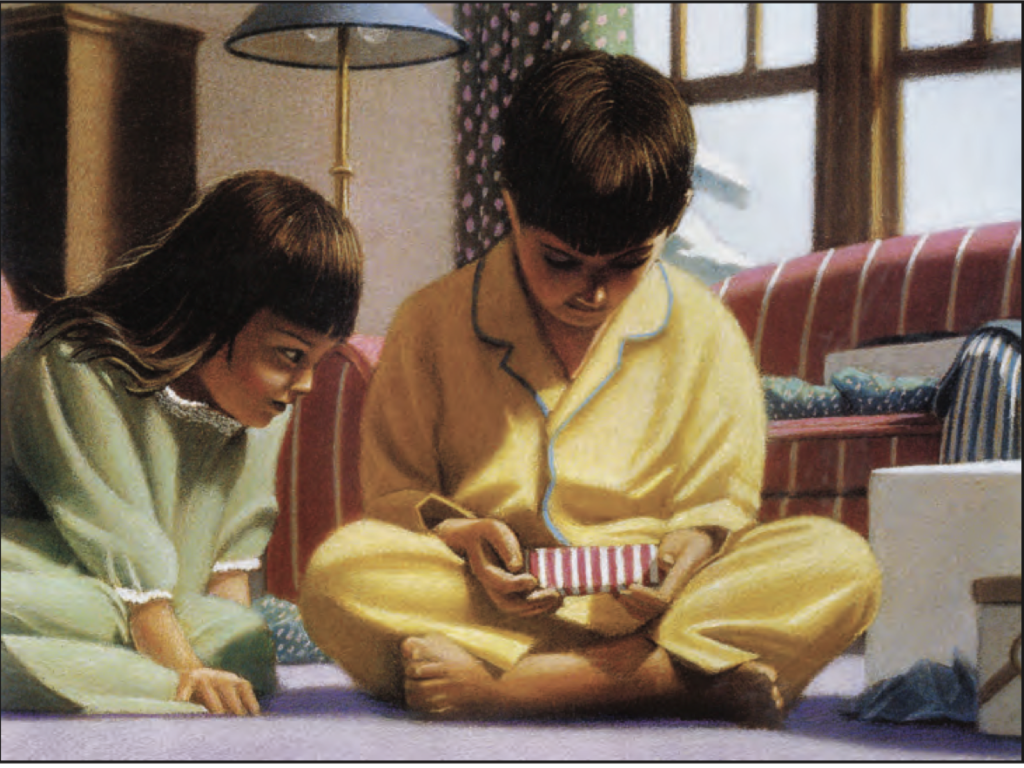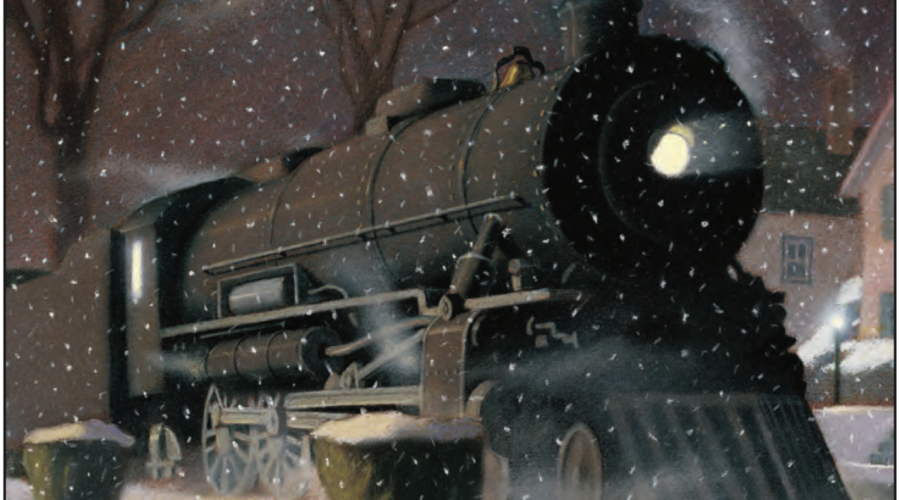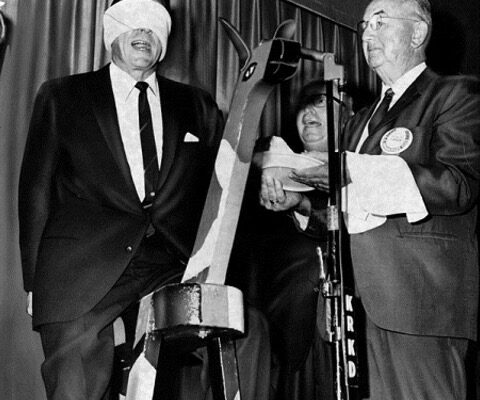When I was a young boy growing up in the suburbs of southeast Houston, every Christmas Eve I would sneak out onto our screened front porch and stare into the night sky as I tried to spot Santa’s sleigh as it arrived from the North Pole.
In our community of Galena Park, the bright lights of the refineries that lined the banks of the Houston Ship Channel lit the sky each night, so it did not require much imagination for a restless boy to envision Santa’s sparkling red sleigh and reindeer moving swiftly across the horizon amid all those flickering lights.

Many years later as an adult, I worked in the book business for the venerable Boston firm Houghton Mifflin, which published Chris Van Allsburg’s landmark Christmas classic, The Polar Express.
More than three decades have now passed since the meeting at our Boston headquarters when our sales and marketing group first laid eyes on the early proofs of the book that would eventually rival “The Night before Christmas” as America’s book of choice for the holiday season.

There were audible oohs and aahs heard around the meeting table as we first perused the pages of this vibrant and original Christmas story that would go on to win the Caldecott Medal, which is awarded annually to the best illustrated children’s book.
The story is about a young boy’s fantastical train ride to the North Pole, where he is chosen by Santa to receive the first gift of Christmas. The boy chooses a bell from the harness of the reindeer, only to become disheartened on the train trip home when he discovers it missing after falling through a hole in the pocket of his pajamas.

However, on Christmas morning, the boy and his sister find a small package under the tree delivered by Santa Claus, who had left a note explaining that the bell was found on the seat of his sleigh. The children were both overjoyed as they listened to the beautiful ring of the bell, but sadly, their parents were unable to hear its sound, and concluded that it must have been broken.
Van Allsburg’s books often revealed a dream-like quality and offered a curious perspective from a child’s eye view. Children connected with his unique artwork and his mysterious stories. His earlier books had already made a formidable impact on the children’s book market, including The Garden of Abdul Gasazi and Jumanji, which had been his first Caldecott Medal winner four years earlier.
The Mysteries of Harris Burdick featured a series of seemingly unrelated images, including only a title and one-line description that almost invited children to make up their own stories about the mystery behind each picture.
The Polar Express was indeed one of those special books that offered all the right ingredients of great storytelling that fired the imagination of children and inspired future generations of young readers.
I have fond memories of accompanying Chris during his many Southern California book tours, but I particularly remember his bookstore signings for The Polar Express that very first year the book was released. I watched the long lines of children as they excitedly approached the author who would be signing their copy of the book. Their impatience and eagerness at being given the chance of meeting him was quite evident.
But what I also noticed during those signings were the children’s parents, many of whom demonstrated that same anticipation as they neared the author’s table. The last few lines in the story might well have offered an explanation.

“At one time, most of my friends could hear the bell, but as years passed, it fell silent for all of them. Even Sarah found one Christmas that she could no longer hear its sweet sound. Though I’ve grown old, the bell still rings for me, as it does for all who truly believe.”
For many of us whose hair has now turned grey, the faint sound of the bell is no longer detectable, but each Christmas season as I reread The Polar Express, I find myself listening closely in hopes of hearing its sweet ring just one more time.
Bob Vickrey’s Palisadian friend Don Burgess was the award-winning cinematographer for the 2004 hit movie The Polar Express. Another Palisadian, Tom Hanks, narrated the film. When the movie arrived in theaters across the country, the massive promotion launched by Warner Bros. Pictures and by Houghton Mifflin, vaulted the book to the top of best-seller lists during the holiday season and contributed to a record-breaking year for the company.
The Polar Express book cover
Illustrations from The Polar Express by Chris Van Allsburg





